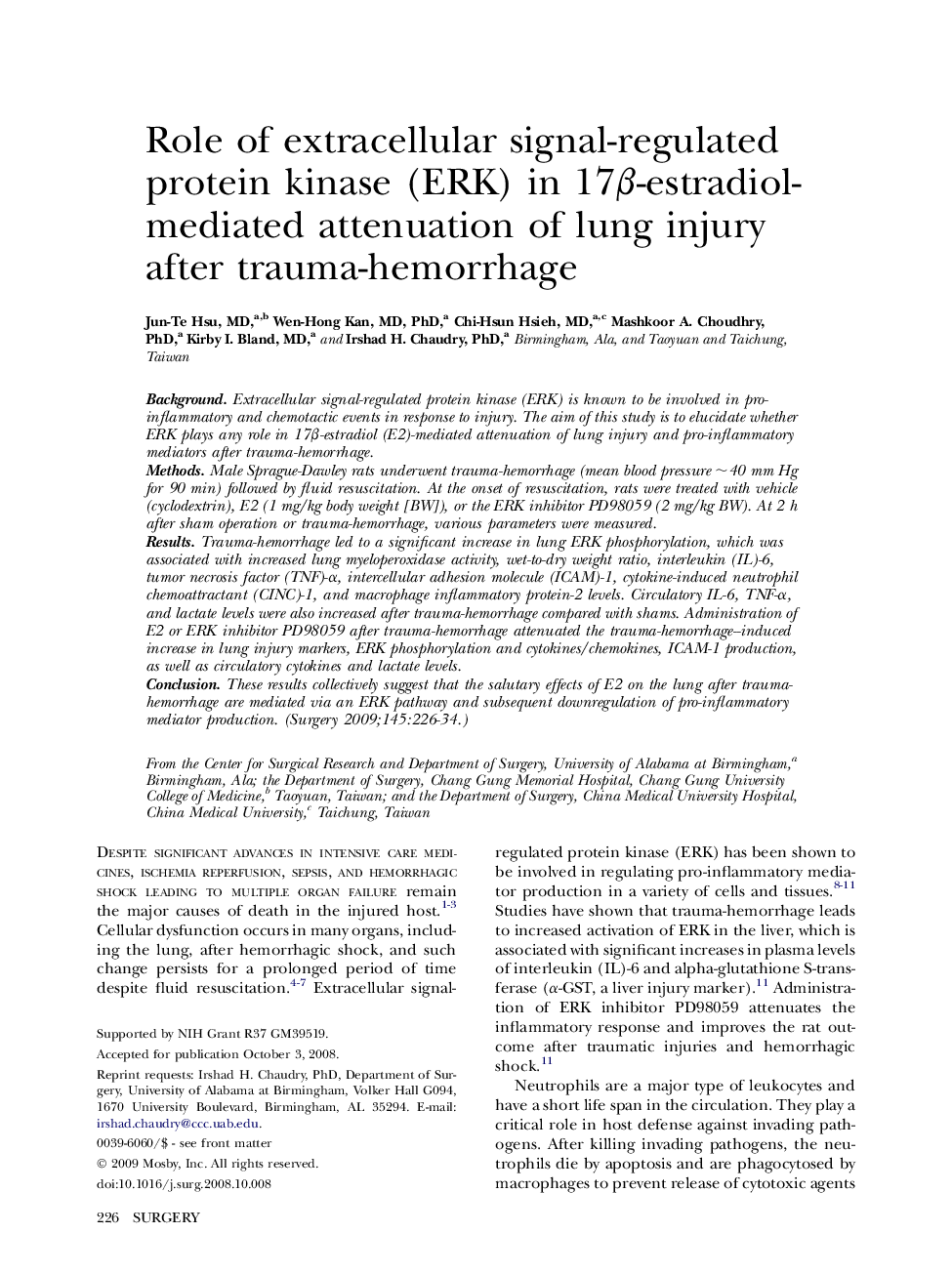| Article ID | Journal | Published Year | Pages | File Type |
|---|---|---|---|---|
| 4309147 | Surgery | 2009 | 9 Pages |
BackgroundExtracellular signal-regulated protein kinase (ERK) is known to be involved in pro-inflammatory and chemotactic events in response to injury. The aim of this study is to elucidate whether ERK plays any role in 17β-estradiol (E2)-mediated attenuation of lung injury and pro-inflammatory mediators after trauma-hemorrhage.MethodsMale Sprague-Dawley rats underwent trauma-hemorrhage (mean blood pressure ∼40 mm Hg for 90 min) followed by fluid resuscitation. At the onset of resuscitation, rats were treated with vehicle (cyclodextrin), E2 (1 mg/kg body weight [BW]), or the ERK inhibitor PD98059 (2 mg/kg BW). At 2 h after sham operation or trauma-hemorrhage, various parameters were measured.ResultsTrauma-hemorrhage led to a significant increase in lung ERK phosphorylation, which was associated with increased lung myeloperoxidase activity, wet-to-dry weight ratio, interleukin (IL)-6, tumor necrosis factor (TNF)-α, intercellular adhesion molecule (ICAM)-1, cytokine-induced neutrophil chemoattractant (CINC)-1, and macrophage inflammatory protein-2 levels. Circulatory IL-6, TNF-α, and lactate levels were also increased after trauma-hemorrhage compared with shams. Administration of E2 or ERK inhibitor PD98059 after trauma-hemorrhage attenuated the trauma-hemorrhage–induced increase in lung injury markers, ERK phosphorylation and cytokines/chemokines, ICAM-1 production, as well as circulatory cytokines and lactate levels.ConclusionThese results collectively suggest that the salutary effects of E2 on the lung after trauma-hemorrhage are mediated via an ERK pathway and subsequent downregulation of pro-inflammatory mediator production.
